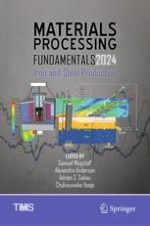This collection covers various aspects of the fundamentals, synthesis, analysis, design, monitoring, and control of metals, materials, and metallurgical processes and phenomena. This volume will focus on the fundamentals of iron and steel production including ladle processing, casting, rolling, forging, and subsequent surface treatments. Topics represented include, but are not limited to:
• Use of artificial intelligence or big data in the control or optimization of industrial processes
• Modelling or optimization of recycle streams and scrap loops
• Measurement and control in hostile environments
• Modeling transport phenomena in materials processing and metallurgical processes involving iron, steel, nonferrous metals, and composites
• Thermodynamics, kinetics, and physical chemistry of materials processes and modelling thereof
